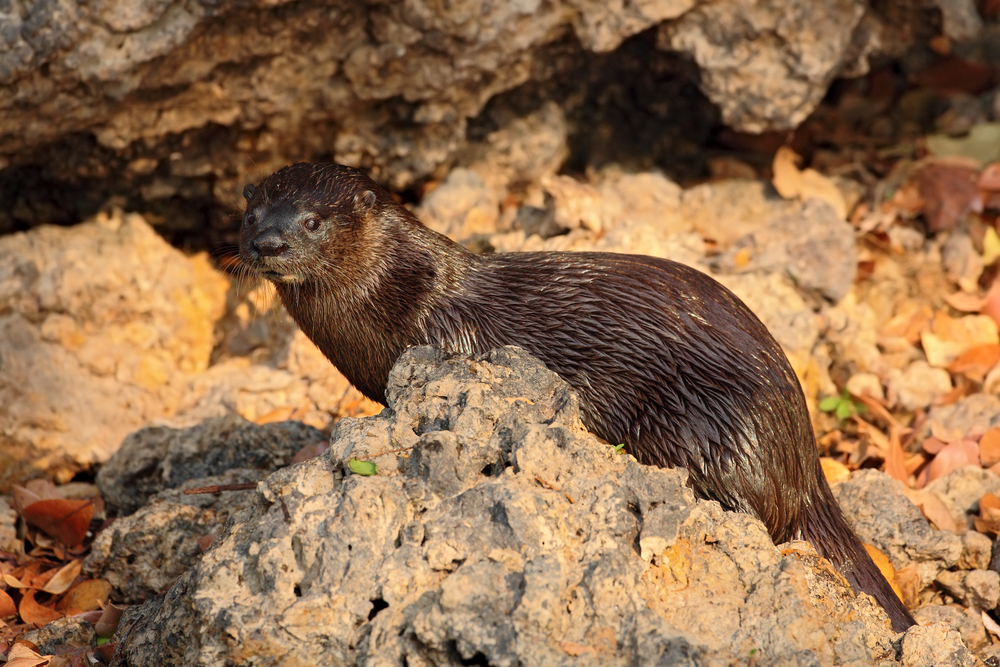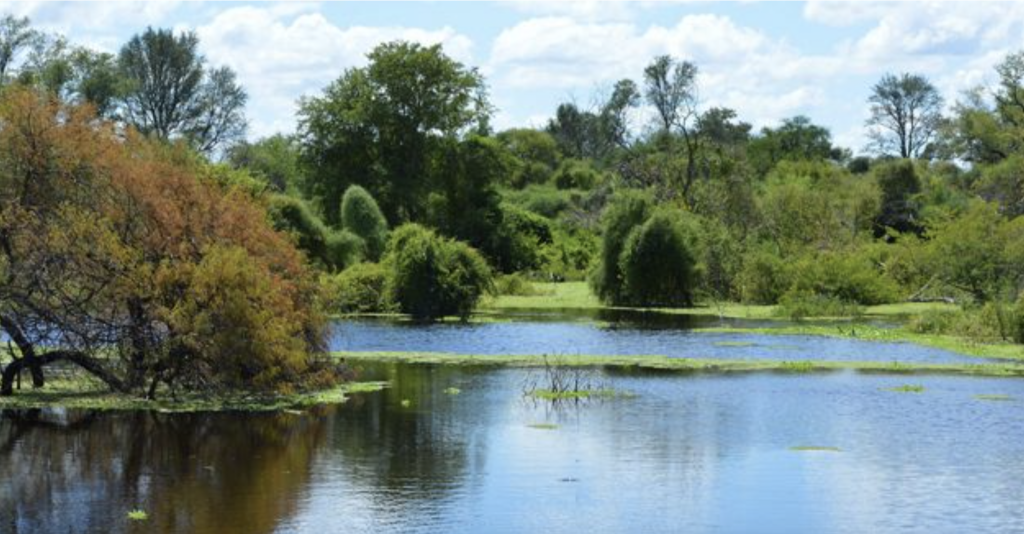Río Negro Overview
Río Negro National Park, known locally as Parque Nacional Río Negro, is situated in the northeastern corner of Paraguay’s Chaco region, within the Department of Alto Paraguay.
Established in 2004, the park encompasses approximately 1,238 square kilometers (478 square miles) and shares borders with Bolivia’s Otuquis National Park and Brazil’s Pantanal. This positioning places it within the expansive Pantanal, the world’s largest inland wetland, recognized for its ecological significance and biodiversity.
The park’s terrain is characterized by a mosaic of ecosystems resulting from the convergence of the Pantanal, Cerrado, and Dry Chaco regions. This unique blend includes vast floodplains, dense forests, palm groves, and savannahs.
The landscape is interspersed with numerous rivers, lakes, and marshes, creating a dynamic environment that supports a rich variety of flora. Notable vegetation includes stands of Copernicia alba palms, white and red quebracho trees, palo borracho (Ceiba speciosa), and various cacti species.
Río Negro National Park is a haven for wildlife enthusiasts, offering sightings of an impressive array of species. The park is home to 116 mammal species, including jaguars, pumas, maned wolves, giant anteaters, giant otters, giant armadillos, marsh deer, capybaras, tapirs, and various monkey species such as night monkeys and Callithrix argentata.
Birdwatchers can observe over 350 bird species, including the hyacinth macaw, hummingbirds, jabiru storks, and forest storks. The park also hosts 42 reptile species, 23 amphibian species, and 92 fish species, reflecting its rich aquatic habitats.
Among the park’s popular features are its pristine wetlands, which offer unique opportunities for wildlife observation, especially during the dry season when animals congregate around water sources. The diverse ecosystems provide habitats for a wide range of species, making it a prime location for ecotourism and research.
Visitors can engage with the park through guided tours, birdwatching excursions, and boat trips along its waterways, offering intimate encounters with the region’s flora and fauna. The park’s remote location ensures an immersive experience in nature, away from the disturbances of urban life.
Conservation efforts in Río Negro National Park have been pivotal in preserving its unique ecosystems. The park’s establishment has contributed to the protection of the Paraguayan Pantanal, recognized as a Ramsar site in 1995 due to its global ecological importance.
However, challenges persist, including illegal hunting, deforestation, and the impacts of climate change. Ongoing management strategies focus on habitat preservation, anti-poaching measures, and community engagement to promote sustainable practices.
In summary, Río Negro National Park stands as a testament to Paraguay’s commitment to conserving its natural heritage. Its rich biodiversity, unique landscapes, and cultural significance offer invaluable opportunities for ecological research, environmental education, and sustainable tourism.












































































